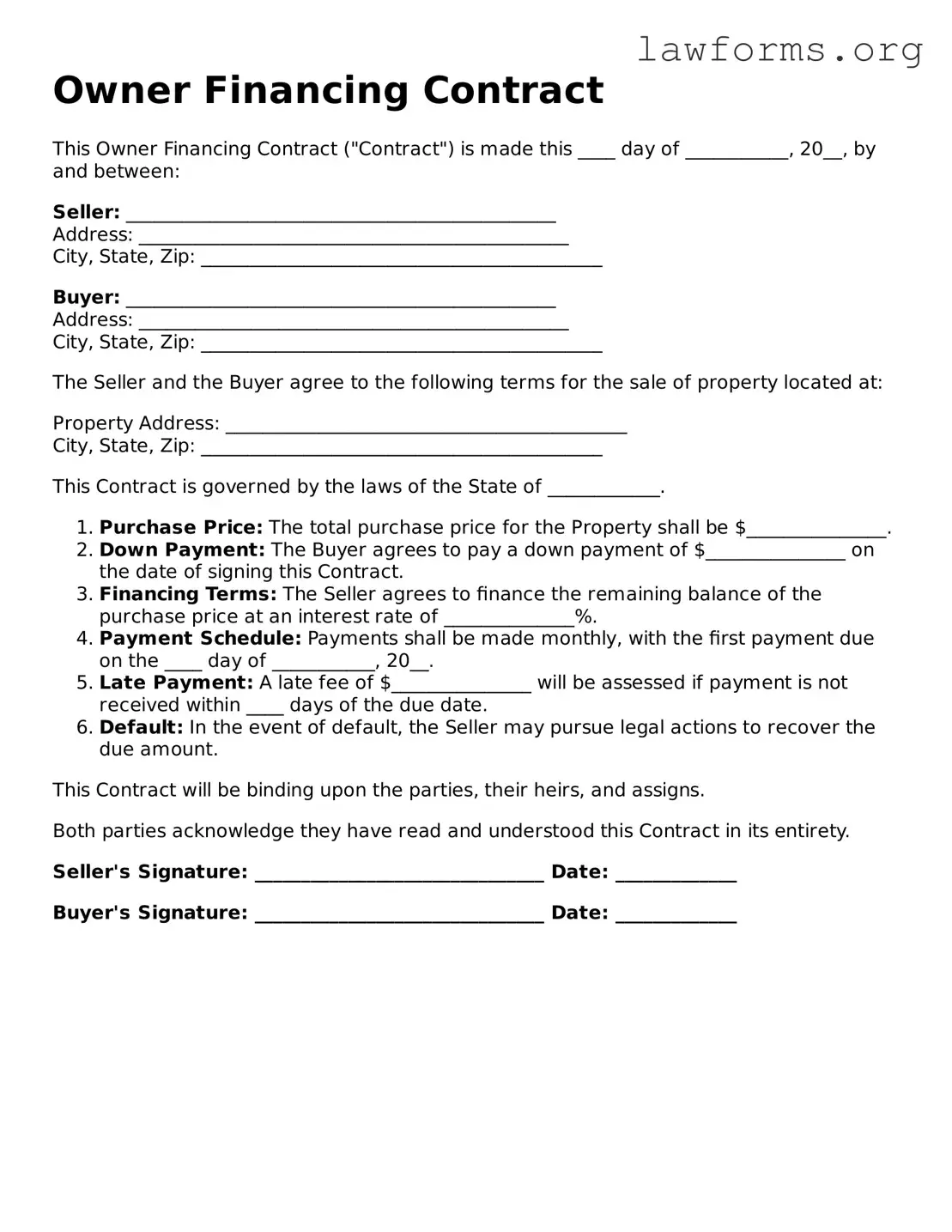Owner Financing Contract
This Owner Financing Contract ("Contract") is made this ____ day of ___________, 20__, by and between:
Seller: ______________________________________________
Address: ______________________________________________
City, State, Zip: ___________________________________________
Buyer: ______________________________________________
Address: ______________________________________________
City, State, Zip: ___________________________________________
The Seller and the Buyer agree to the following terms for the sale of property located at:
Property Address: ___________________________________________
City, State, Zip: ___________________________________________
This Contract is governed by the laws of the State of ____________.
- Purchase Price: The total purchase price for the Property shall be $_______________.
- Down Payment: The Buyer agrees to pay a down payment of $_______________ on the date of signing this Contract.
- Financing Terms: The Seller agrees to finance the remaining balance of the purchase price at an interest rate of ______________%.
- Payment Schedule: Payments shall be made monthly, with the first payment due on the ____ day of ___________, 20__.
- Late Payment: A late fee of $_______________ will be assessed if payment is not received within ____ days of the due date.
- Default: In the event of default, the Seller may pursue legal actions to recover the due amount.
This Contract will be binding upon the parties, their heirs, and assigns.
Both parties acknowledge they have read and understood this Contract in its entirety.
Seller's Signature: _______________________________ Date: _____________
Buyer's Signature: _______________________________ Date: _____________
